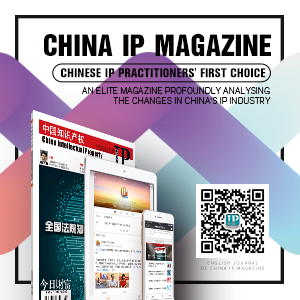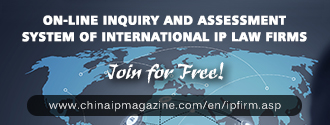Dunjun Company v. Tengda and Other Companies Invention Patent Infringement Disputes
——Judgment on infringement of multi-agent implementation method patent
First trial case number: (2018) Lu 01 Minchu No. 1481
Second trial case number: (2019) Supreme People’s Court Zhimin Zhong No. 147
【The main takeaway of the trial】
If the accused infringer solidifies the substance of the patent method in the accused infringing product for the purpose of production and operation, the action or the result of the action plays an irreplaceable substantive role for the full coverage of the technical features of the patent claim. When the end user can reproduce the process of the patent method naturally when using the alleged infringing product normally, it should be determined that the alleged infringer has implemented the patent method and infringed the rights of the patentee.
【Case Introduction】
Appellant (Defendant in the original trial): Shenzhen Jixiang Tengda Technology Co., Ltd. (referred to as Tengda Company)
Appellee (plaintiff in the original trial): Shenzhen Dunjun Technology Co., Ltd. (referred to as Dunjun Company)
Defendant in the first trial: Jinan Lixia Hongkang Electronic Product Operation Department (referred to as Hongkang Operation Department)
Defendant in the first trial: Jinan Lixia Haowei Electronic Product Management Department (referred to as Haowei Management Department)
Dunjun Company is the owner of the patent involved in the case. The patent involved is a method patent and belongs to the field of network communication. The protection basis claimed by Dunjun Company in this case is Claims 1, 2 and its contents are:
1. A method for easy access to a network operator's portal website, which is characterized by the following processing steps: A. The first upstream HTTP message before the portal service user equipment fails the authentication of the underlying hardware of the access server is directly submitted to "Virtual Web Server", the "Virtual Web Server" function is realized by the "Virtual Web Server" module of the access server high-level software; B. The "Virtual Web Server" is virtualized into a website to be accessed by the user and establishes TCP connection with portal business user equipment, the "virtual Web server" returns a message containing redirect information to the underlying hardware of the access server, and then the underlying hardware of the access server sends a redirect message to the portal business user device according to the normal forwarding process to the real web portal - Portal_Server; C. After receiving the redirect message, the browser of the portal service user device automatically initiates access to the real web portal - Portal_Server.
2. A method for easily accessing a network operator's portal website according to claim 1, wherein in step A, the portal service user enters any correct domain name, IP address or any number, it forms an upstream IP message; in the step B, the "virtual Web server" virtualizes the website of the IP address of the IP message.
Dunjun Company filed a lawsuit request to the court of first instance: 1. Order Tengda Company, Hongkang Operation Department and Haowei Operation Department to immediately stop manufacturing, selling and promising to sell the products that infringe Dunjun Company’s patent rights involved in the case, destroy the inventory and produce molds; 2 . Order Tengda Company, Hongkang Operation Department and Haowei Operation Department to compensate Dunjun Company for economic losses and reasonable expenses totaling 5 million yuan; 3. Order Tengda Company, Hongkang Operation Department and Haowei Operation Department to bear the litigation costs in this case.
Tengda Company believes that the patent protection involved is a network access authentication method. Tengda Company only manufactures the alleged infringing product, but does not use the technical solution of the patent protection involved, and the patent method involved is not a product manufacturing method. This method cannot directly obtain any product (including the infringed product), therefore the protection of the patent involved cannot be extended to the product.
The Intermediate People ’s Court of Jinan City, Shandong Province believes that when business users use the accused infringing products to access the network operator’s portal website, all technical solutions of the patent claims 1 and 2 involved in the case are reproduced. Tengda Company selling and promising to sell the alleged infringing product violates the patent right of Dunjun Company and shall bear the responsibility for stopping the infringement and compensating for economic losses. Tengda Company refused to accept and appealed to the Supreme People's Court.
The second instance of the Supreme People's Court held that under the circumstances of this case, it should be determined that Tengda Company's actions of manufacturing, promising to sell, and selling the alleged infringing product constitute patent infringement and should bear civil liability for stopping the infringement and compensating for losses. Therefore, Tenda's appeal request cannot be established and should be rejected.
【Typical meaning】
According to the principle of comprehensive coverage of patent infringement judgment, the court should judge whether the alleged infringing product or method fully covers all necessary technical features recorded in the patent claim. Only if it does, can the court determine whether the alleged infringing product or method falls within the scope of protection of the patent right, and then determine whether the alleged infringer ’s behavior constitutes patent infringement.
In this case, the patented technology involved belongs to the field of network communication, and the vast majority of inventions in this field are method patents. In practice, these method patents are often installed in a hardware device in the form of software. When the end user uses the terminal device, the entire process of the patented method will be reproduced. On the surface, the end user is the implementer of the patented method. However, in fact, the patented method has already been solidified by the infringed person in the infringed product. The end user uses the terminal equipment, but only mechanically reuses the patent method previously solidified in the infringed product.
According to the aforementioned comprehensive coverage principle, if the accused infringer merely manufactures or sells the accused infringing product with the function of directly implementing the patent method, the accused infringer's behavior will be difficult to be deemed to constitute an infringement of the patent right. The Court of First Instance and the Court of Second Instance fully considered the characteristics of the field of network communications, and made a new interpretation of the principle of comprehensive coverage of patent infringement judgment, and the original "infringed product or method of the infringement fully covered the necessary technical characteristics of the patent right in the case" was further explained as “the act or result of the action has played an irreplaceable and substantial role in covering the necessary technical features of the patent claims in a comprehensive way”. If the alleged action or the result of the action has played an irreplaceable and substantial role in the comprehensive coverage of the technical features of the patent claim, it should be determined that the alleged infringer has implemented the patent method and infringed the rights of the patentee. This new interpretation of the principle of comprehensive coverage enables the legal rights of invention creators in the field of network communications to be substantially protected, thereby facilitating sustainable innovation and fair competition in the network communications industry.
This analysis is based on the case mentioned in Summary of the Judgment of the Intellectual Property Court of the Supreme People's Court (2019), you can referred to the original article through links below:
Link to the Part I: http://www.chinaiptoday.com/post.html?id=832
Link to the Part II: http://www.chinaiptoday.com/post.html?id=833
Link to the Part III: http://www.chinaiptoday.com/post.html?id=834
Link to the Part IV: http://www.chinaiptoday.com/post.html?id=837











